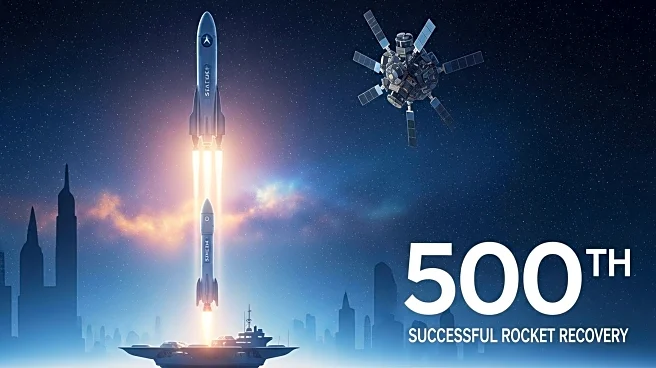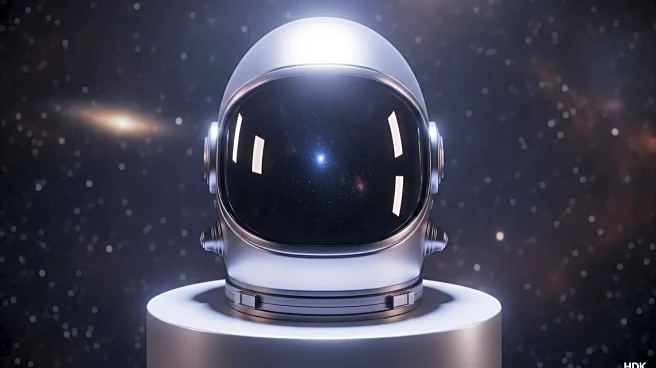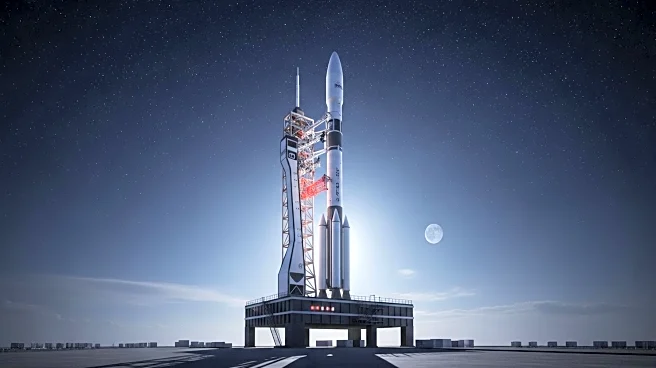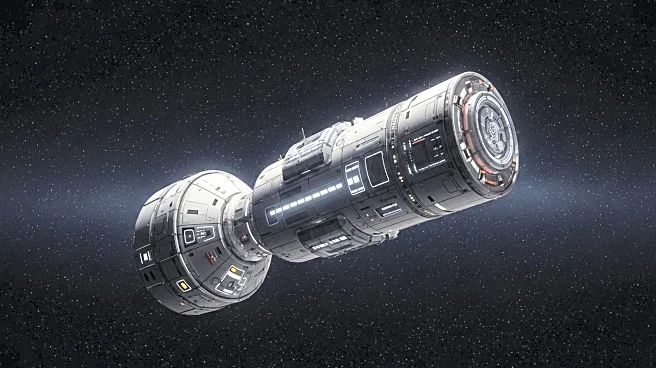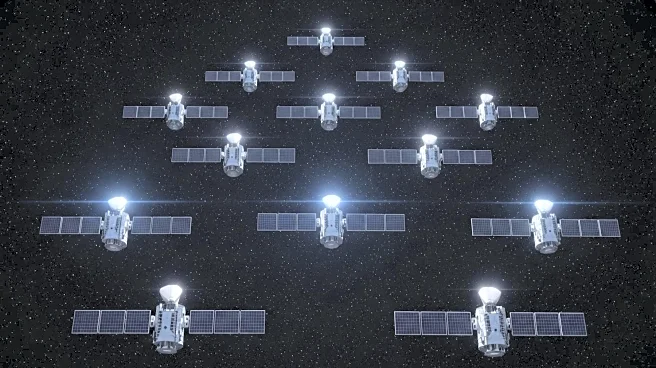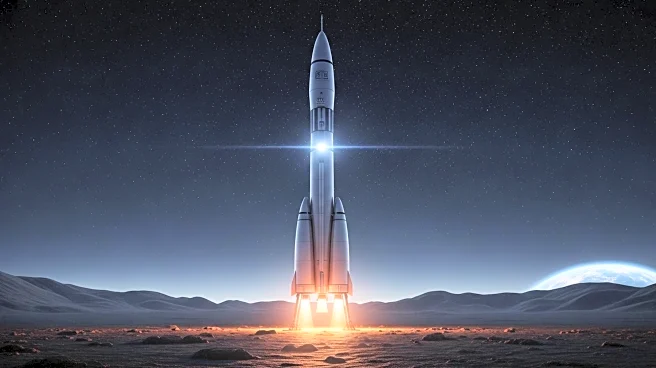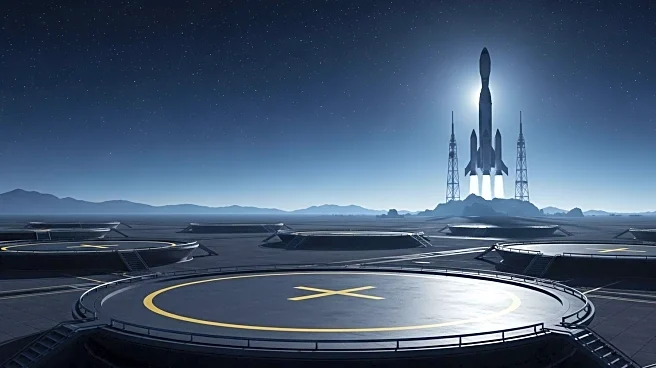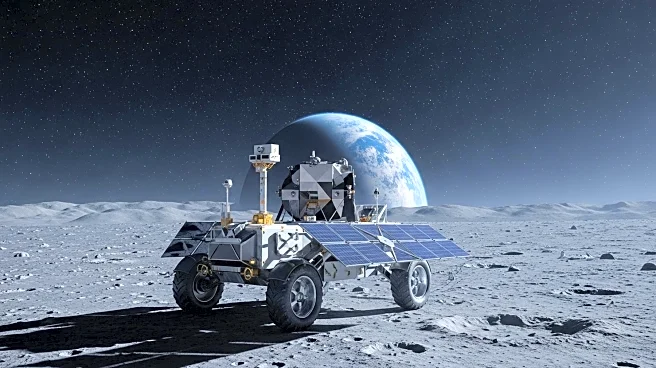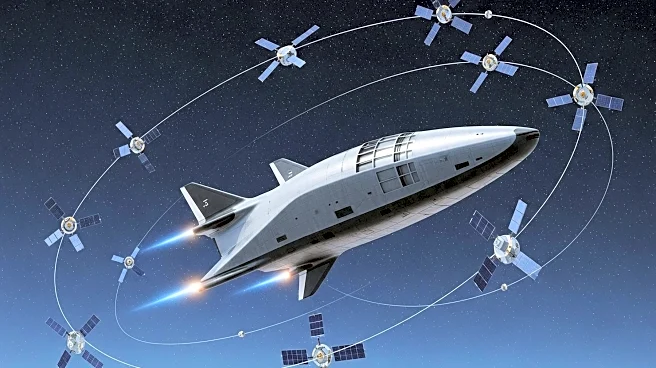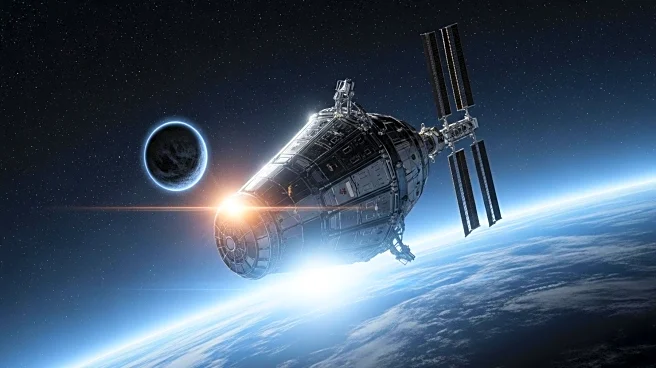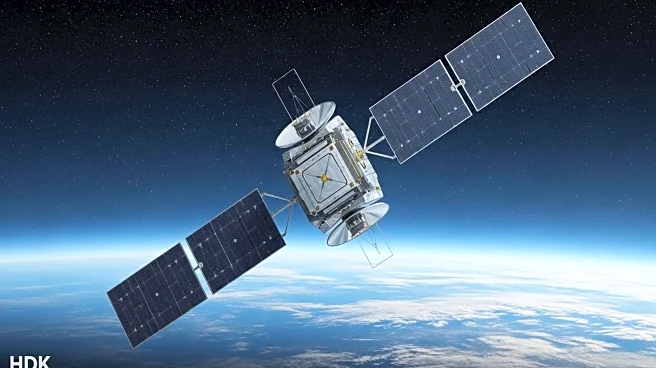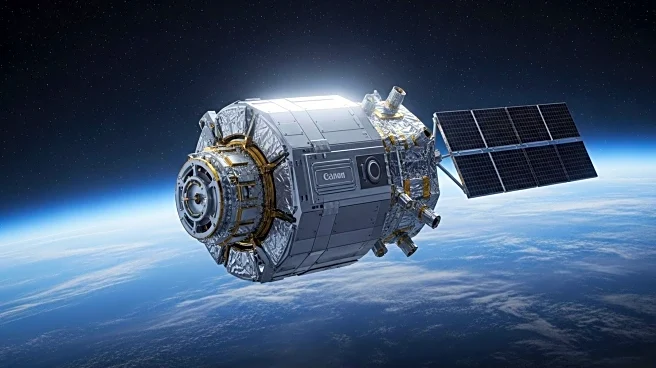What is the story about?
What's Happening?
SpaceX successfully launched 28 Starlink broadband satellites into low Earth orbit using a Falcon 9 rocket from NASA's Kennedy Space Center in Florida. The launch occurred at 8:32 a.m. EDT on September 5, 2025. The rocket's first stage returned to Earth, landing on the SpaceX drone ship 'Just Read the Instructions' approximately 8.5 minutes after liftoff. This marked the 27th touchdown for this specific booster and the company's 500th successful recovery of an orbital-class rocket. The Falcon 9's initial ascent was completed in under nine minutes, followed by a 45-minute coast. The Starlink satellites are scheduled to be deployed from the Falcon 9's second stage one hour and four minutes after the launch. SpaceX has launched 111 Falcon 9 missions in 2025, contributing to a total of 529 since 2010.
Why It's Important?
The successful launch and recovery of the Falcon 9 rocket underscore SpaceX's continued advancements in reusable rocket technology, which significantly reduce the cost of space travel. The deployment of additional Starlink satellites enhances global internet connectivity, particularly in remote areas. This milestone reflects SpaceX's growing influence in the aerospace industry and its commitment to expanding the Starlink megaconstellation, which now includes over 8,370 active satellites. The achievement of 500 successful rocket recoveries demonstrates the reliability and efficiency of SpaceX's reusable rocket program, setting a precedent for future space missions.
What's Next?
SpaceX is expected to continue its frequent launch schedule, further expanding the Starlink satellite network. The company may also focus on enhancing the capabilities of its Falcon Heavy and Starship rockets, aiming to support more ambitious missions, including lunar and Mars exploration. Stakeholders in the aerospace industry will likely monitor SpaceX's progress in reusable rocket technology, as it could influence future collaborations and investments in space exploration.
AI Generated Content
Do you find this article useful?
